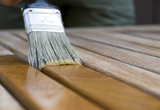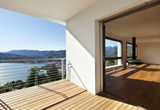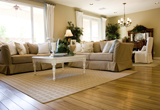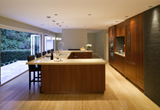Q&A |
|
Why I need to treat my house with wood preservatives? The treatment of soil and the application of wood preservative are already specified in most of the building projects. It is highly recommended that wood and soil treatment must be carried out prior to construction. Many of the new buildings and projects are already following these building codes. However, some small scale building structures and housing projects are not yet following these rules because of the lack of awareness on the importance and benefits of wood preservation and soil treatment. Do I have to treat all the wood works at home? Yes! It is very important that all wood works are treated with wood preservative to provide full protection against the attack of termites and wood boring insects. Wood that are not treated with Solignum Trussguard wood preservative are totally expose to termite and wood borers attack, leaving your property at high risk of infestation. Remember, there are billions of termites out there and it will only take 6 months to one year for them to make your house collapse. What are the most destructive insects at home? Termites Commonly but erroneously called ‘white ants’ termites are the most destructive wood-boring insect. Most groups of termites existing in Hong Kong or Southern China are subterranean termites. They are more widely distributed and live in colonies in the ground and construct mud tunnels and extend their habitat for long distances into timber or our properties and destroy wood structures. Why termites are our No.1 enemy? There are 3000 different species of termites and 300 – 400 of them lives in China. Termites can reproduce millions of its kind in just a year and can totally destroy all untreated timbers in houses or building in just 6 months to one 1 year. They can enter through cracks or fly to the ceiling where it can create colonies without noticing it until your roof collapse. Termites digest wood, paper, furniture, bridges, trestles, wood structures and many other materials including plastic, rubber, cloth and even electrical wires. They can also do great damage to living trees. Given their capabilities to produce millions of its kind and create havoc to properties and investments, Termites are considered a serious pest and thus no.1 enemy in many parts of the world. How to stop termite infestation? The house owners and contractor must take every precaution to prevent infestation. Make sure there are no fine cracks in the concrete foundation or loose mortar in the cement blocks. Apply Solignum Soilguard to soil around the footings of buildings to prevent termites from reaching or climbing up the walls and pipes to reach the wood structure. Or treat the wood with Solignum preservatives that repel or kill termites and other wood-boring insects. For more information or assistance, please contact us. Why buildings need soil treatment? Soil treatment is necessary and highly important not only on houses but also on high structures such as condominiums and buildings. Termites such as Drywood or alates, produce wings during their mating period and fly out to high places and areas like condominium and building to start a new colony. Drywood infestation is hardly noticeable as they do not create earthen or mud tunnels like the subterranean to enter the house. The only time you will know is when the ceiling or hanging décor collapse. The soil termiticide such as Soilguard, provides a strong barrier that repels termites from coming out of the ground and entering the structures. Without soil treatment, termites can easily fly out and eat not only your timber but other valuable properties such as books, documents and even clothing. Can we eliminate all the termites? No, it is impossible to totally eliminate termites as these are insects that produce billions of its kind. Besides, termites are an important parts of the food chain. Termites are responsible in breaking down fallen trees and debris in our forest, allowing more spaces for vegetation and other trees to grow. Many insects, birds and animals rely on termite as their important source of food. We do not need to eliminate termites to get the protection for our wood and houses, we only need to stop termite infestation by the application of wood preservative like Trussguard on all the timber, bamboo structures or wood based products. What should I do to prevent termite infestation? As the saying goes, Prevention is better than cure. Termites and even wood borers attack all untreated timbers and can enter to houses and buildings through untreated soil. Even if you do not have wood or wood based materials in your houses, termites can do damages to clothes, books and documents. So only use wood and wood based materials that are in good condition and treated with the Tried, Tested and Trusted wood preservative such as Solignum Trussguard. Do not forget to treat the soil as well with Soilguard to prevent entry of termites. Proper and regular maintenance of the structure and surroundings are likewise necessary to achieve a totally insect free surroundings. Why it is cheaper to treat wood during construction? It is cheaper to treat wood during construction because aside from only spending treatment, you are assured that the wood are protected all over. If you treat wood after construction, it will likely protect only the parts that can be reached by brush or spray thus untreated parts make it vulnerable to termite attack. This will simply means additional expense once those untreated parts are infested with termites and requires replacement. Can wood coatings stops termite? No! Traditional wood coatings won’t stop termites attack. House owners and contractors should always apply Solignum wood preservatives to repel or kill termites for indoor and outdoor furniture or wood structures (above ground) before applying wood coating. How do I protect wood from termite attack? House owners and contractors should always treat all timber door frames, cabinets, furniture or wood structure with Solignum wood preservatives before painting or laminating. Please contact us for more product information and recommendation. What should I do if I missed the termite treatment during decoration? If wood-boring insects or termites were found after you moved in, then you can still buy Solignum wood preservatives to treat the furniture. You may also seek the assistance of a professional pest control applicator to treat all the furniture for you. Please contact us if you need more information or assistance. I will start decorating my home soon, what are the treatments I must do? Before you start decorating your home, please ensure that all treatments for the house has been carried out. This would mean the application of wood preservative for the wood and wood based materials and soil termiticide to achieve total protection against wood destroying insects. Treatment of wood carried out after decorating your house will limit the application thus allowing some parts of the timber unprotected against the attack by wood destroying insects such as termites. You may talk to us so we can identify the best wood protection and application that suits your needs. What should I do if termites are found in my place? First, check all possible entries of termites and assess the damage. If there is heavy infestation then you may seek assistance from a professional pest control to carry out a thorough check of all other timbers that might have been infested by termites. If the treatment has been carried out, please ensure that you replace all infested timbers with a pre-treated ones using Solignum Trussguard. The application of Solignum Trussguard to your wood and Solignum Soilguard for your soil provides Total Termite Solution to your house. How to apply Solignum wood preservative? Solignum wood preservative can be applied by brush, immersion or spray. The 3 liberal coats application must also be observed. All cut ends must also be treated. Can I mix Solignum Trussguard or Timberlife with water, oil or thinner? No. Solignum wood preservative is already in a READY TO USE formula. Diluting will lessen its efficacy. How long does Solignum wood preservative last? The efficacy of Solignum wood preservative Interior depends on the type of wood, way of application and environment exposure. However, we have documents showing there are wood treated with Solignum that lasts for more than 60 years. Is it safe for human being? The Solignum range of wood preservatives are water based and do NOT contain heavy metals, such as Copper. It has no toxic substances that are harmful to humans. It is formulated and approved by the Food and Drugs authority for use by not only professional pest control applicators but also DIY clients and contractors. How deep is the penetration of Solignum Interior/ Exterior into the wood This depends how you apply the product and what type of timber you are using however, Solignum wood preservative will penetrate up to 12 mm deep on sap woods of most softwoods, or up to 6mm on sap wood of most commonly used medium density tropical hardwoods which is more than enough to have a total envelope treatment to repel termites & wood borers from attacking and damaging the wood. However, penetration will still vary depends on the type/ porosity of wood, its moisture content, and application of the product. Are all termiticide the same? No, termiticide are not the same. The formulation of termiticides vary according to the manner of application and the service environment where the product will be used. There are termiticides that are formulated to have high toxicity level, carrying an active ingredients that are truly dangerous. This is because its application will be for environments that are exposed to harsh conditions and heavy infestations like pole posts, railways and fences. Some may only have a less harmful ingredients simply because it is intended for above ground application and or for DIY consumers. So, it is very important that one has understood the problem to know the appropriate treatment according to its needs. And to ensure the right treatment and products, choose only the company and products that are tried, tested and trusted all over the world. During and after application, do I need to vacate the place? Ideally, it is advised to vacate the place for at least 1 hour and keep the area well ventilated during application. However, if this is not feasible, it shouldn’t be much of a concern as Solignum has less odour, and Low VOC. Just make sure the room is well ventilated during the application. Wood treated with Solignum wood preservative can still be applied over with varnish or paint? Yes, allow first the product dry, (24 hours), then you can over coat with any paint of varnish product For wood stain, for a superior finish & lasting ability we recommend Solignum Timbertone/ Solignum Deck Stain to be used. How long is the waiting time before applying paint if I applied Solignum wood preservative? 24 hours is recommended but can be lessened depending on the weather condition. During wet season or running days, it will take much longer to dry and paint. Why Protim Solignum wood preservatives? Protim Solignum is an international company based in the United Kingdom. It is one of the world’s well-known supplier of timber preservation products. It represents various brands & various treatment procedures and technical advances around the world. It is represented in 137 countries worldwide. All timber preservation products are design to suite varying conditions and biological attack, such as termites. Protim Solignum have been accredited with both ISO 9001 and ISO 14001 in the United Kingdom and indeed is the only timber preservation company in the world that has been granted to carry the Royal Seal of Her Majesty the Queen. This seal represents quality, reliability and total commitment in providing total wood preservation throughout world. How to prevent fungal decay and termite damage? There are many ways in preventing the occurrence of fungal decay and termite attack. Some of these are proper maintenance of your homes, ensuring no water leak that can produce molds or fungi; regular clean-up of the surroundings, eliminating the source of food of these pests like fallen trees, cardboards or other cellulose materials. But most importantly, soil treatment and the application of wood preservative on wood and other wood based materials are the basic factors that can prevent decay and termite damage. Why is it so important to keep fungi out of our living environment? There are about million types of fungi known today. Some of them can cause serious damages to human, such as fungi nails, skin diseases and respiratory disorder or asthma. So it is very important that we keep our surroundings and environment clean & fungi free. What is wet rot and dry rot? Fungus (Coniophora Puteana) Cellar Fungus is one of the wet-rot fungi, which feed on damp timber, causing the wood to lose weight and strength and ultimately to collapse. Wet rot fungi require more moisture than the dry rot fungus. Unlike Serpula Lacrymans this fungus does not form a fleshy fruit body but a thin, olive green, flat sporophore. Characteristic dark brown strands develop on the timber surface. It is often found in cellars or wherever persistent dampness is present. How to protect timber from harmful UV lights? Wood treated against fungi and termites attack should be further protected with Solignum Timbertone (one step water based wood stain). The microporous property of Solignum Timbertone allows the wood to breathe while maintaining the natural beauty of wood. Solignum Timbertone works by penetrating into the wood allowing its stain/color to become an integral part of the wood. As such, cracking and peeling off of stain are unlikely to occur. Apart from this, Solignum Timbertone protects the wood from harmful UV lights. Test results showed that Solignum Timbertone can withstand the UV lights for more than 5 years. For more information or assistance, please contact us. What is fire retardant? Why is it so important? Each year there are many fire related cases that burn thousands of houses. These can be prevented or avoided however, if we only take seriously some pre-cautionary measures such as avoiding overloading of electricity, proper maintenance of cocking equipment and regular check-up of gas pipes among many. Apart from these, the use of fire retardant has become an integral part in safeguarding many modern buildings and houses from fire. The fire retardant acts as an added protection by containing the flame in the affected areas only, slowing the rate of ignition and flame spread. Much more, fire retardant product such as “Flameguard” prevents the emission of toxic fumes or smoke where most cases of death in fire are attributed to it. The application of fire retardant allows residents to have more time to get out and find safer places away from the fire. So it is best to fire-proof your homes. Why treating timber? Treatment of wood adds to its versatility. Treatment with chemical preservatives protects wood that is exposed to the elements, is in contact with the ground, or in used in areas of high humidity. The treatment of wood allows you to build a project for outside exposure that will last a decade or more. What are the benefits of treated wood? Properly treated wood resists rot, decay, termites and wood-bores and provides excellent service life for your timber products, even when exposed to severe conditions. Is it true that all wood treatment is the same? No. Just because a wood is green in colour doesn’t mean it is treated. Not all the timber preservatives are designed to stop termites as well as wood-bores and decay fungi. For the correct product to be used in your region, please contact us for more product information and assistance. How to select a wood treatment? In order to obtain the properly treated wood you should aware that not all wood is created equal. And depth of penetration is important in providing a chemical barrier thick enough that any checking or splitting won’t expose untreated wood to decay or insect attack. For more information please contact us. |
Copyright © 2015 Timbermate (Hong Kong) Limited. All rights reserved.
Use of this website signifes your agreement to the terms of the use and Online Privacy Policy.







